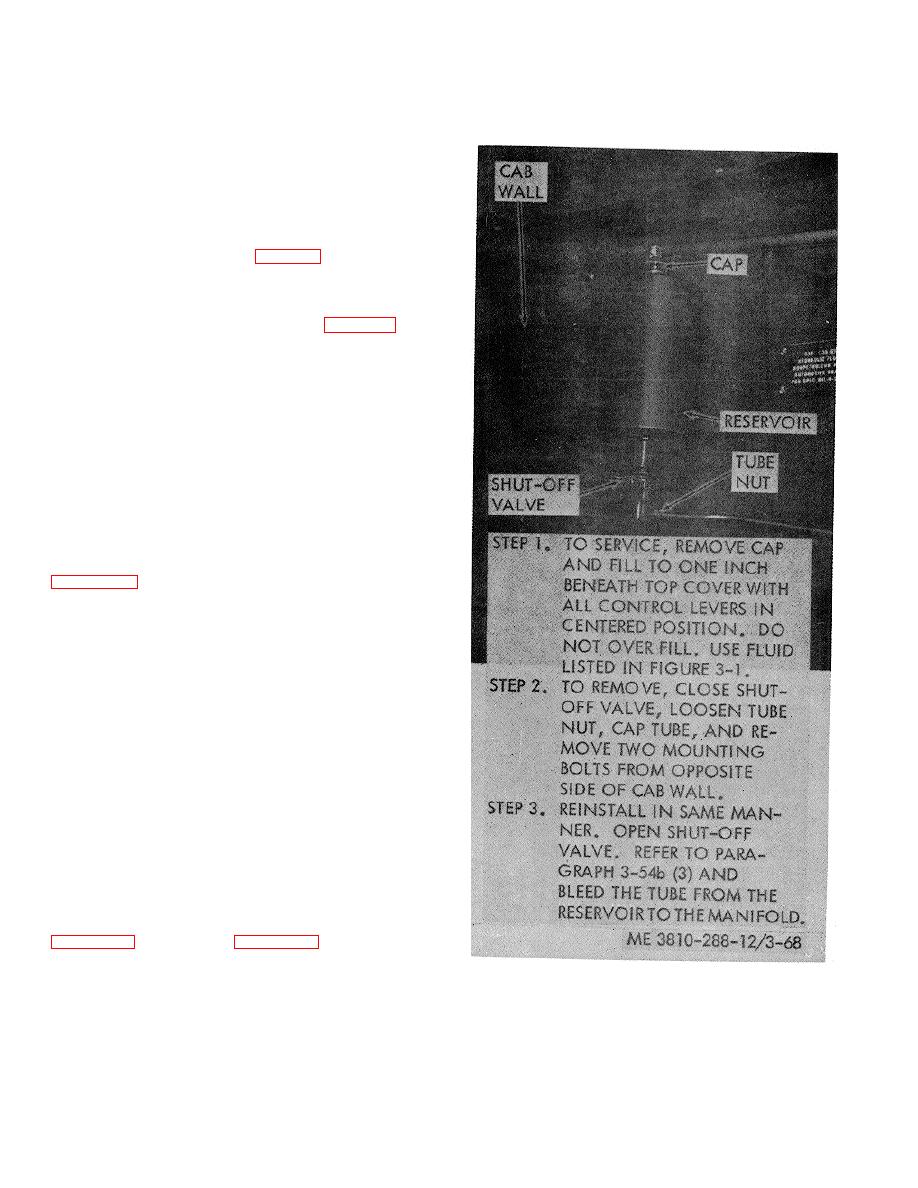
TM 5-3810-288-12
(3) Bleeding. When air is present in the hy-
linders can be positioned for removal by "tapping" the
engine start pushbutton with the ignition switch in the
draulic system, the controls are "spongy" and do not
OFF position.
operate to hold the brakes and clutches as firmly as
when air is absent. All air must be removed before the
controls will operate properly. Bleed the system as
follows:
Note. Containers must be perfectly clean and
no mineral oil can be used in the hydraulic system.
(a) Fill the reservoir (fig. 3-68) with the proper
fluid and check the level frequently during the following
steps. Keep the reservoir full.
(b) Open the manifold valve (fig. 3-66) and
allow fluid to flow until no bubbles are present in the fluid
coming out of the valve. Then close the manifold valve.
Catch fluid in a clean jar and have a supply of rags
available to catch leakage fluid.
(c) Starting with the lower row of master
cylinders, open the bleeder cap on the top of each
master cylinder in turn, and bleed the fluid until no air is
visible in the fluid. Then close the bleeder cap, while
solid, bubble-free fluid is being expelled.
(d) Attach a bleeder hose, which may be a
length of any clear plastic hose, to the bleed valve of the
lowest clutch or brake cylinder to be bled. Refer to
cylinders on the machine, beginning with the lowest
cylinder and working toward the highest cylinder. Keep
the hose submerged in fluid at the bottom of the jar to
prevent air from reentering the system.
Note. Cylinder bleed fittings must be at their
highest point of travel. They may be positioned by "tap-
ping" the engine start pushbutton.
(e) Work each of the controls slowly and note
the action of the brake or clutch. If any control still feels
"spongy", slight pressure may be applied to the
operating lever or pedal to assist in expelling more fluid
from the open bleed screw. Be sure to close the bleed
screw before the lever or pedal reaches the end of its
stroke, or air will be sucked into the system through the
bleed screw.
c. Hydraulic Cylinders (Brake or Clutch).
Close the hydraulic reservoir shutoff valve shown in
replace a hydraulic cylinder. Use the same procedure
Figure 3-68. Hydraulic fluid reservoir, service, removal
for all hydraulic brake and clutch cylinders. Note that
replacement
front or rear drum clutch cy-
3-82

